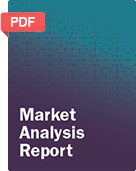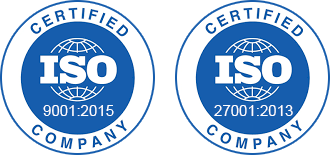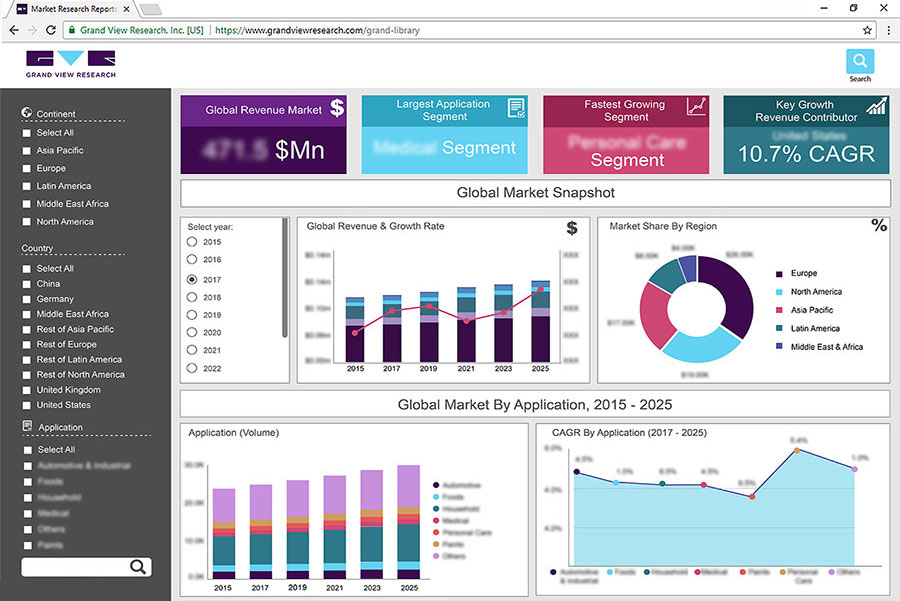
Chromatography Resins Procurement Intelligence Report, 2023 - 2030 (Revenue Forecast, Supplier Ranking & Matrix, Emerging Technologies, Pricing Models, Cost Structure, Engagement & Operating Model, Competitive Landscape)
- Published Date: ---
- Base Year for Estimate: 2022
- Report ID: GVR-P-UC-081
- Format: Electronic (PDF)
- Historical Data: 2020 - 2021
- Number of Pages: 0
Chromatography Resins Category Overview
The chromatography resins category is expected to grow at a CAGR of 6.9% from 2023 to 2030. The growing demand for pharmaceutical and biotechnology operations is what drives this category as both these sectors use these resins for a variety of purposes, such as the manufacturing of highly pure pharmaceuticals, the monitoring and analysis of trace pollutants, and the detection of molecules like proteins and antibodies. The requirement for high-quality drugs is also increasing the demand for the category in several countries. Manufacturers are developing highly efficient and high-resolution anion exchangers that enable unique selectivity and improve separation.
The largest product category and the segment with the largest revenue share in the global market for chromatography resins is natural resins. With a more than 30% revenue share, North America is the market's largest geographic region. Leading pharmaceutical businesses are anticipated to move their production bases to APAC, which will accelerate the expansion of chromatography resins in the area throughout the course of the forecasted period.
Technologies such as affinity and ion exchange are used in this category. Bio-Rad Technologies use affinity to separate molecules based on their specific interactions. These resins are usually made of a ligand that binds to a specific molecule such as an antibody. GE Healthcare use ion exchange which involves the separation of charged molecules based on their affinity for oppositely charged icons. It is widely used in the purification of biomolecules such as proteins and nucleic acids, as well as in the production of biopharmaceuticals.
This category is highly fragmented, with several small and large players, each with their own unique product offerings. Players compete on factors such as product quality, price, and innovations. There are small players that operate in niche segments and the segment is characterized by the presence of several contract manufacturing organizations which offer customized chromatography resins for specific applications.
Businesses generally use cost-based pricing models and value-based pricing models. In the cost-based pricing model, the price of the product is based on the cost of production, packaging, and distribution with a markup to ensure profitability. On the other hand, the price is set based on the perceived value of the product, rather than the cost of production or the price of competitors in the value-based pricing model. The major cost components in this category are manufacturing cost which accounts for around 50-60% of the total cost, packaging cost which accounts for around 10-15% and distribution cost which accounts for 5-10% of the overall cost.
The United States and Germany are the global leaders in this category as they are the home for some of the largest pharmaceutical and biotechnology companies in the world, which are the major consumers of chromatography resins. To ensure high-quality chromatography resin sourcing, consider key factors such as supplier reputation, robust quality assurance systems, defined product specifications, technical support, customization capabilities, regulatory compliance, reliable supply chains, cost-effectiveness, and long-term partnerships.
Chromatography Resins Services Procurement Intelligence Report Scope
|
Report Attribute |
Details |
|
Chromatography Resins Category Growth Rate |
CAGR of 6.9% from 2023 to 2030 |
|
Base Year for Estimation |
2022 |
|
Pricing growth Outlook |
7 - 8% (Annually) |
|
Pricing Models |
The cost-based and value-based pricing model |
|
Supplier Selection Scope |
Cost and pricing, Past engagements, Productivity, Geographical presence |
|
Supplier selection criteria |
Quality, price, delivery time, location, reliability, experience, technical specifications, operational capabilities, regulatory standards and mandates, category innovations, and others. |
|
Report Coverage |
Revenue forecast, supplier ranking, supplier matrix, emerging technology, pricing models, cost structure, competitive landscape, growth factors, trends, engagement, and operating model |
|
Key companies profiled |
Agilent Technologies, Bio-Rad Technologies, GE Healthcare, Expedeon, Perkin Elmer, Tosoh Bioscience, Mitsubishi Chemical corporation, Shimadzu, Pall Corporation, Thermo Fisher Scientific |
|
Regional scope |
Global |
|
Revenue Forecast in 2030 |
USD 3.94 billion |
|
Historical data |
2020 - 2021 |
|
Quantitative units |
Revenue in USD billion and CAGR from 2023 to 2030 |
|
Customization scope |
Up to 48 hours of customization free with every report. |
|
Pricing and purchase options |
Avail customized purchase options to meet your exact research needs. Explore purchase options |
Frequently Asked Questions About This Report
b. The global chromatography resins category size was valued at approximately USD 2.22 billion in 2022 and is estimated to witness a CAGR of 6.9% from 2023 to 2030.
b. The increasing demand for biopharmaceuticals and the focus on sustainability and eco-friendliness are driving the growth of the category.
b. According to the LCC/BCC sourcing analysis, the United States and Germany are the ideal destinations for sourcing chromatography resins.
b. This category is highly fragmented with a mix of large, regional, local, and niche players who compete mostly on their unique product offerings. Some of the key players are Agilent Technologies, Bio-Rad Technologies, and GE Healthcare.
b. Raw materials, labor, packaging cost, and distribution cost are the major key components of this category. Other key costs include quality control and testing.
b. Customization, technical support, supply chain reliability, and quality assurance are some of the best sourcing practices considered in this category.
Add-on Services
Should Cost Analysis
Component wise cost break down for better negotiation for the client, highlights the key cost drivers in the market with future price fluctuation for different materials (e.g.: steel, aluminum, etc.) used in the production process
Rate Benchmarking
Offering cost transparency for different products / services procured by the client. A typical report involves 2-3 case scenarios helping clients to select the best suited engagement with the supplier
Salary Benchmarking
Determining and forecasting salaries for specific skill set labor to make decision on outsourcing vs in-house.
Supplier Newsletter
A typical newsletter study by capturing latest information for specific suppliers related to: M&As, technological innovations, expansion, litigations, bankruptcy etc.




